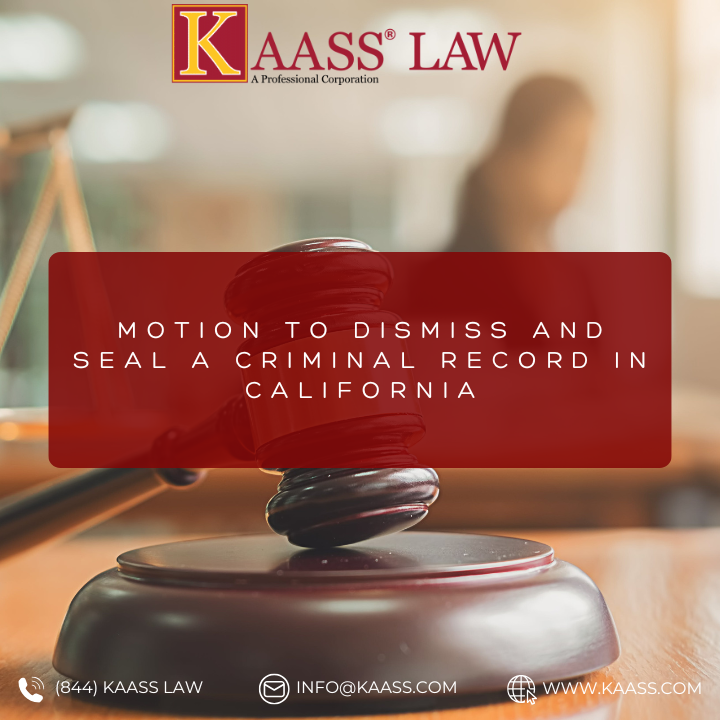Understanding a Motion to Dismiss and Seal a Criminal Record
A motion to dismiss and seal a criminal record in California gives individuals an opportunity to clear their name and move forward without the burden of a past charge. Mistakes, misunderstandings, and wrongful accusations can continue to affect a person long after the case ends, and California law recognizes this impact. The law provides several statutory remedies, including Penal Code sections 1385, 1473.7, and 851.8, which allow courts to dismiss, vacate, or seal a case in the interests of justice.
These statutes serve different but complementary purposes. Section 1385 gives judges authority to dismiss criminal actions when it serves justice. This provision ensures that courts can end prosecutions that no longer serve fairness or public interest. Section 1473.7 allows individuals to vacate convictions or sentences if there is a prejudicial error affecting their understanding or rights. It protects defendants who were not fully aware of the consequences of their pleas or who received ineffective advice. Section 851.8 authorizes the sealing and destruction of arrest records when a person can demonstrate factual innocence. Together, these codes form a powerful legal framework that helps people correct injustices and restore their reputation.
Unlike a general expungement, which merely clears a conviction from the public record, these remedies can completely erase the existence of the criminal matter. When granted, they provide the strongest form of relief available under California law.
Grounds for Dismissal and Sealing
California’s Penal Code offers multiple pathways to justice, depending on the circumstances of each case.
Penal Code Section 1385 gives the court discretion to dismiss a criminal case “in the furtherance of justice.” This can occur when continuing the prosecution would be unfair or unnecessary. Judges consider factors like the defendant’s conduct, the strength of the evidence, and whether the case serves any public purpose. Courts often apply this section when new evidence reveals mistaken identity or other compelling reasons to end the case.
Penal Code section 1473.7 addresses convictions or guilty pleas made without the defendant’s full understanding of their consequences. It frequently applies to noncitizens who were not properly advised about immigration consequences, but it also protects anyone who can show a prejudicial error that affected their ability to make an informed decision. A successful motion under this section results in vacating the conviction entirely.
Penal Code section 851.8 plays a vital role in helping people who were wrongfully accused or arrested. It allows a person to petition the court for a finding of factual innocence. To succeed, the petitioner must show that no reasonable cause existed to believe they committed the offense. If the court grants the petition, it orders law enforcement agencies to seal and destroy the arrest records. This process eliminates every trace of the case from databases and background checks.
Each of these laws aims to correct injustice and protect individuals from the long-term harm that can result from wrongful or outdated criminal records.
Establishing Mistaken Identity and Factual Innocence
A key reason to file a motion to dismiss and seal a criminal record in California is mistaken identity. In some cases, law enforcement arrests the wrong person due to clerical errors, inaccurate witness descriptions, or name similarities. Even after authorities discover the mistake, the arrest record can stay active in databases and harm the person’s employment and housing opportunities.
A finding of factual innocence under Penal Code section 851.8 offers the most complete relief. To achieve this, the petitioner must show that no reasonable person could conclude they committed the offense based on the available evidence. Courts interpret this standard strictly, but when the evidence clearly supports innocence, the court can order all agencies to seal and destroy the arrest record.
Mistaken identity cases highlight the importance of thorough legal representation. Even when prosecutors drop charges or never file them, the attorney can petition the court to clear the record entirely and protect the client’s reputation and future opportunities.
The Interests of Justice and the Court’s Discretion
California courts have broad authority to act in the interests of justice under Penal Code section 1385. This principle allows judges to look beyond technicalities and evaluate whether continuing the case would serve fairness or public welfare.
For example, the court may dismiss a case when the evidence is weak, the prosecution violates the defendant’s rights, or continuing the case no longer serves a legitimate purpose. The court may also consider factors such as rehabilitation, time passed since the incident, or community impact.
How KAASS LAW Can Help
Filing a motion to dismiss and seal a criminal record in California requires a detailed understanding of the law and careful preparation of supporting evidence. The process involves gathering arrest records, court filings, and declarations that demonstrate factual innocence or mistaken identity. Courts demand clear documentation and persuasive legal arguments to grant these extraordinary remedies.
The attorneys at KAASS LAW handle complex post-conviction matters with extensive experience. We carefully review every detail of the case and evaluate whether sections 1385, 1473.7, or 851.8 apply. Then we prepare strong motions that highlight the client’s innocence and the injustice of maintaining the record.
Our legal team has helped clients restore their reputations, secure employment, and rebuild their lives after wrongful arrests or convictions. We fight to ensure that one mistake, or someone else’s mistake, does not define your future. If you or someone you know has been wrongfully accused, arrested, or convicted, contact us today. Call KAASS LAW, leave it to us!

